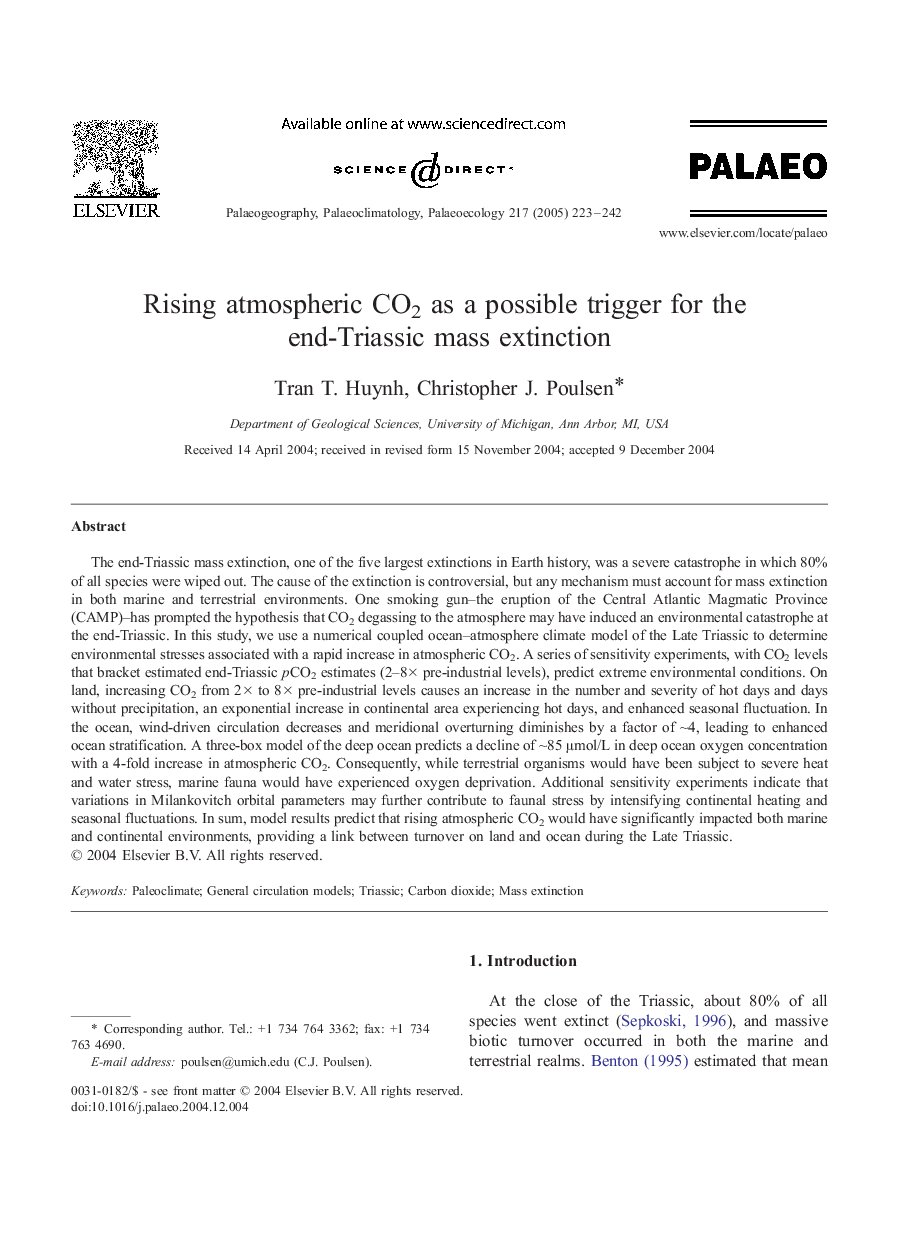| Article ID | Journal | Published Year | Pages | File Type |
|---|---|---|---|---|
| 9463191 | Palaeogeography, Palaeoclimatology, Palaeoecology | 2005 | 20 Pages |
Abstract
The end-Triassic mass extinction, one of the five largest extinctions in Earth history, was a severe catastrophe in which 80% of all species were wiped out. The cause of the extinction is controversial, but any mechanism must account for mass extinction in both marine and terrestrial environments. One smoking gun-the eruption of the Central Atlantic Magmatic Province (CAMP)-has prompted the hypothesis that CO2 degassing to the atmosphere may have induced an environmental catastrophe at the end-Triassic. In this study, we use a numerical coupled ocean-atmosphere climate model of the Late Triassic to determine environmental stresses associated with a rapid increase in atmospheric CO2. A series of sensitivity experiments, with CO2 levels that bracket estimated end-Triassic pCO2 estimates (2-8à pre-industrial levels), predict extreme environmental conditions. On land, increasing CO2 from 2à to 8à pre-industrial levels causes an increase in the number and severity of hot days and days without precipitation, an exponential increase in continental area experiencing hot days, and enhanced seasonal fluctuation. In the ocean, wind-driven circulation decreases and meridional overturning diminishes by a factor of â¼4, leading to enhanced ocean stratification. A three-box model of the deep ocean predicts a decline of â¼85 μmol/L in deep ocean oxygen concentration with a 4-fold increase in atmospheric CO2. Consequently, while terrestrial organisms would have been subject to severe heat and water stress, marine fauna would have experienced oxygen deprivation. Additional sensitivity experiments indicate that variations in Milankovitch orbital parameters may further contribute to faunal stress by intensifying continental heating and seasonal fluctuations. In sum, model results predict that rising atmospheric CO2 would have significantly impacted both marine and continental environments, providing a link between turnover on land and ocean during the Late Triassic.
Related Topics
Physical Sciences and Engineering
Earth and Planetary Sciences
Earth-Surface Processes
Authors
Tran T. Huynh, Christopher J. Poulsen,
